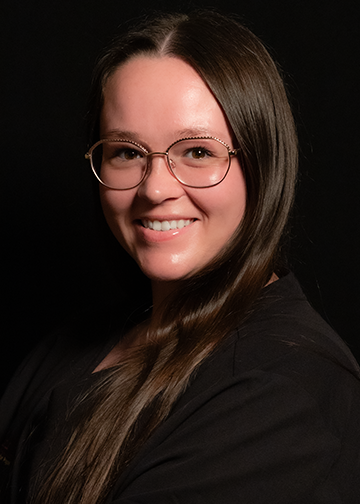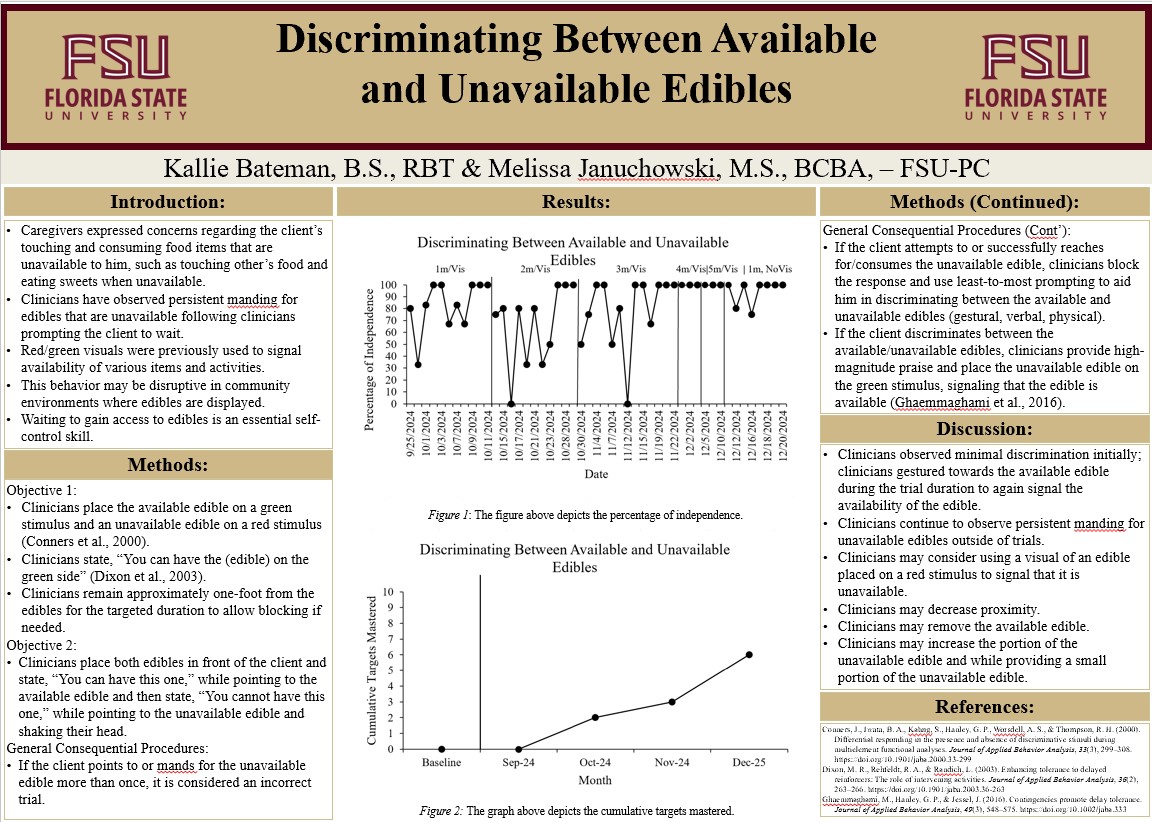Student Research Symposium Program Portal: Submission #139
Submission information
Submission Number: 139
Submission ID: 8511
Submission UUID: f5fe7c89-be43-410b-b76a-e3834e24428c
Submission URI: /student-research/symposium/research-symposium-program-portal
Submission Update: /student-research/symposium/research-symposium-program-portal?token=DxYKhPQd41G8cdu4M-fsiuuL0IBCOshR97wN0sBPXS0
Created: Fri, 03/21/2025 - 07:12 PM
Completed: Fri, 03/21/2025 - 07:15 PM
Changed: Fri, 05/02/2025 - 12:12 PM
Remote IP address: 24.96.127.59
Submitted by: Anonymous
Language: English
Is draft: No
Webform: Research Symposium Program Portal WF
Submitted to: Student Research Symposium Program Portal
| Primary Student Contact First Name | Kallie |
|---|---|
| Primary Student Contact Last Name | Bateman |
| Pronouns | |
| Primary Student Contact FSU Student Email | klb19i@fsu.edu |
| Photo of all individuals presenting this work |

|
| Major(s) of all individuals presenting this work | Applied Behavior Analysis, Psychology |
| Bio of all individuals presenting this work | I enjoy reading, kayaking, and cats. Following graduation, I plan to pursue a career in applied behavior analysis working with children diagnosed with autism. |
| Poster Title | Discriminating Between Available and Unavailable Edibles |
| Abstract | The client in the procedures is a thirteen-year-old boy who attends ECAP approximately 25 hours each week. Caregivers have expressed concerns regarding the client’s touching other’s food and consuming food items that are unavailable to him. Additionally, the clinical team has observed a deficit related to the client’s ability to discriminate between available and unavailable food items, evidenced by his persistent demanding for edibles when clinician prompt him to wait. The clinical team elected to implement the program Discriminating Between Available and Unavailable Edibles. Within the first objective, clinicians placed an available edible on a green stimulus and an unavailable edible on a red stimulus. Clinicians systematically increased the duration of which the client was required to wait for the unavailable edible, but he was provided access to the available edible at any point. Within the second objective, clinicians removed the green and red visuals. Clinicians presented the available edible and verbally stated that the client could have access to the edible, followed by presenting the unavailable edible and stated that the client could not have access to the edible. If the client attempted to grab the available edible, the clinician blocked the response and stated, “you can’t have the (edible) yet,” while shaking their head “no.” The client has shown significant progress within this program and is currently working towards mastery of discriminating between available and unavailable edibles and refraining from attempting to consume the unavailable edible for two minutes without a visual prompt |
| Research Mentor Name | Melissa Januchowski |
| Research Mentor's College (or High School) | Florida State University |
| Research Mentor's Department (or Subject) | Applied Behavior Analysis, Psychology |
| Research Mentor's Email | garred@psy.fsu.edu |
| Additional Research Mentor(s) | |
| Co-presenter(s) | |
| Keywords | Discrimination, Waiting, |
| Poster Session/Number | C-1 R - 8 |
| Work | Complete |
| Presentation Modality | Face to Face Poster session |
| Poster PDF | Job Fair Poster 3.21.25KB.pdf232.83 KB
|
| Poster Thumbnail |

|
| I will be printing my poster | No |
| Year | 2025 |
| Annual description | 5th annual Undergraduate Research Symposium, April 17, 2025 |
| Update URL | https://pc.fsu.edu/student-research/symposium/research-symposium-program-portal?element_parents=elements/student_photo&ajax_form=1&_wrapper_format=drupal_ajax&token=DxYKhPQd41G8cdu4M-fsiuuL0IBCOshR97wN0sBPXS0 |

